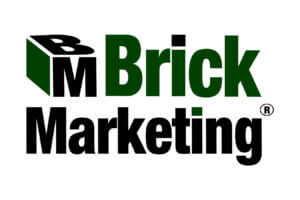From Seedling to Empire: Calibrating Business Growth at Every Stage
When founders talk about growth, they’re often speaking about scale in abstract terms—more revenue, more users, more reach. But growth isn’t a single gear to be cranked endlessly. It’s a layered strategy that shifts shape depending on where the business is in its lifecycle. Whether in its fledgling stages or firmly rooted in maturity, a company needs to evolve not just its product, but its entire approach to progress. The key isn't just expanding—it's expanding intelligently, with timing, structure, and relevance baked into every decision.
Laying Groundwork During the Launch Stage
At the earliest stage, energy often outweighs clarity. New businesses are prone to chasing too many opportunities before understanding which ones actually matter. The smartest growth move at this phase isn’t expansion—it’s focus. Zeroing in on a niche market and building a product that solves one problem exceptionally well creates a foundation strong enough to support later scale. That sense of restraint, oddly enough, becomes a growth strategy in itself, allowing teams to refine their offer and message before trying to do everything at once.
Validating Before You Multiply
Once a product begins to resonate, temptation builds to pour fuel on the fire. But just because early customers are excited doesn’t mean the model is ready for mass adoption. This is the stage to validate—not just the product-market fit, but also internal processes. Growth strategies here should center on stress-testing: can the system handle five times the current orders? Do customer service frameworks scale up or break down under pressure? Validation growth is invisible from the outside, but vital inside—it keeps a business from collapsing under its own ambition.
Keeping Your House in Order
Maintaining well-organized, current, and accessible business and financial records isn't just good practice—it’s a safeguard against chaos. Teams waste fewer hours searching for key documents, and decisions get made faster when information is neatly filed and easy to retrieve. Saving important files as PDFs adds an extra layer of consistency, ensuring formatting stays intact across devices and over time. And when revisions are necessary, a PDF editor lets you update content directly without converting to another format, keeping the workflow smooth and professional. For those looking to streamline their document management process, an overview of PDF editing tools can help pinpoint the right solution for the job.
Channel Diversification Without Dilution
Mid-stage companies often look at new marketing channels as the golden ticket to exponential growth. But dumping resources into every possible path can backfire, spreading efforts too thin and clouding the brand’s core message. Strategic channel expansion works best when rooted in experimentation. Rather than going all in on the latest platform or trend, it’s wiser to test, iterate, and analyze response before committing. In this phase, smart growth means diversifying outreach without diluting identity—a balancing act that separates scalable brands from forgettable ones.
Scaling Culture Alongside Operations
Growth isn’t just a numbers game; it’s also a cultural one. As teams expand and hierarchies emerge, maintaining the original sense of mission becomes a challenge. Businesses that grow successfully at this stage pay attention to how internal culture evolves. Growth strategies need to include leadership development, communication frameworks, and a clear articulation of company values. Otherwise, operational growth may outpace emotional cohesion—and that disconnect becomes a hidden drag on performance.
Knowing When to Pivot and When to Hold
One of the more underrated forms of growth is knowing when not to chase it. As companies age, there’s a pressure to constantly innovate or disrupt, even when a core product is still working. Strategic growth at this stage might look like holding the line—optimizing existing offerings rather than chasing new markets. But when signals shift—market feedback, industry trends, declining ROI on core features—then pivoting becomes the true growth move. This awareness, the tension between holding firm and shifting course, is where executive judgment becomes invaluable.
Forming the Right Partnerships
Late-stage companies often find that organic growth plateaus, especially when markets saturate. That’s when strategic partnerships can breathe new life into the business. Whether it’s a tech integration, a brand collaboration, or a channel alliance, these moves allow companies to access new audiences without reinventing the wheel. But these partnerships work best when they’re aligned on both mission and audience—not just opportunistic mash-ups. In many cases, growth isn’t about finding more customers, but better ways to reach them with existing assets.
There’s no one-size-fits-all formula for growing a business. Every stage demands its own mindset, tactics, and priorities. The smartest companies grow not by scaling faster, but by scaling better—by recognizing which levers to pull, when to pause, and how to evolve without losing what made them compelling in the first place. Growth isn’t just about more—it’s about becoming more of what the company was always meant to be.
Discover the community of Waltham and unlock new opportunities by visiting the Waltham Chamber of Commerce today!
This Hot Deal is promoted by Waltham Chamber of Commerce.


















